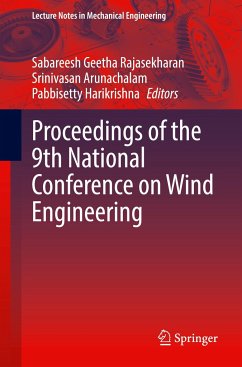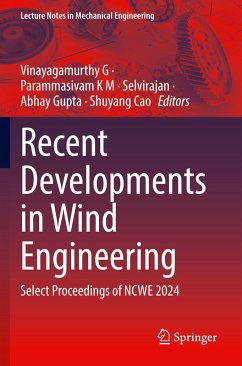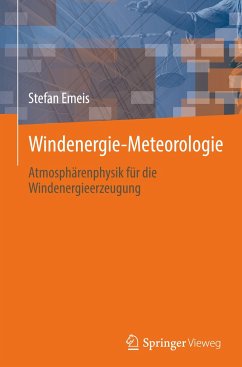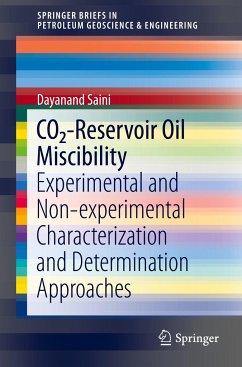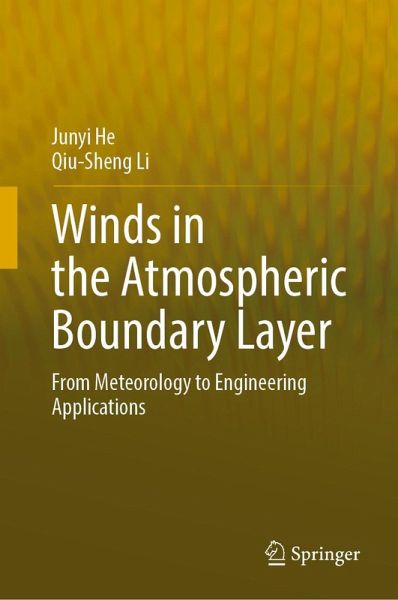
Winds in the Atmospheric Boundary Layer
From Meteorology to Engineering Applications

PAYBACK Punkte
65 °P sammeln!
This book highlights the recent progress in understanding the winds in the Atmospheric boundary layer (ABL) contributing to clarifying the vertical structure of mean wind and turbulence in the ABL and their roles in wind engineering, civil structural design, and wind energy applications. The behaviors of ABL over different types of surfaces, including the urban, suburban, rural, open, and sea surfaces, are explained. Vertical profiles of mean wind speed and direction, as well as turbulence properties, e.g., turbulence intensity, gust factor and peak factor, turbulence integral length scale, an...
This book highlights the recent progress in understanding the winds in the Atmospheric boundary layer (ABL) contributing to clarifying the vertical structure of mean wind and turbulence in the ABL and their roles in wind engineering, civil structural design, and wind energy applications. The behaviors of ABL over different types of surfaces, including the urban, suburban, rural, open, and sea surfaces, are explained. Vertical profiles of mean wind speed and direction, as well as turbulence properties, e.g., turbulence intensity, gust factor and peak factor, turbulence integral length scale, and wind spectra, are discussed. The atmospheric stability effects, diurnal variation, hazardous windstorms (e.g., tropical cyclones, thunderstorms, and tornadoes), and long-term wind climatology are included in the discussion. New findings about the wind characteristics in the ABL are presented in this book owing to the access to and analysis of data from a comprehensive weather monitoring network and a very tall meteorological tower. This book helps bridge the gaps between meteorologists and wind engineers and facilitate the design and operation of civil structures against wind actions



